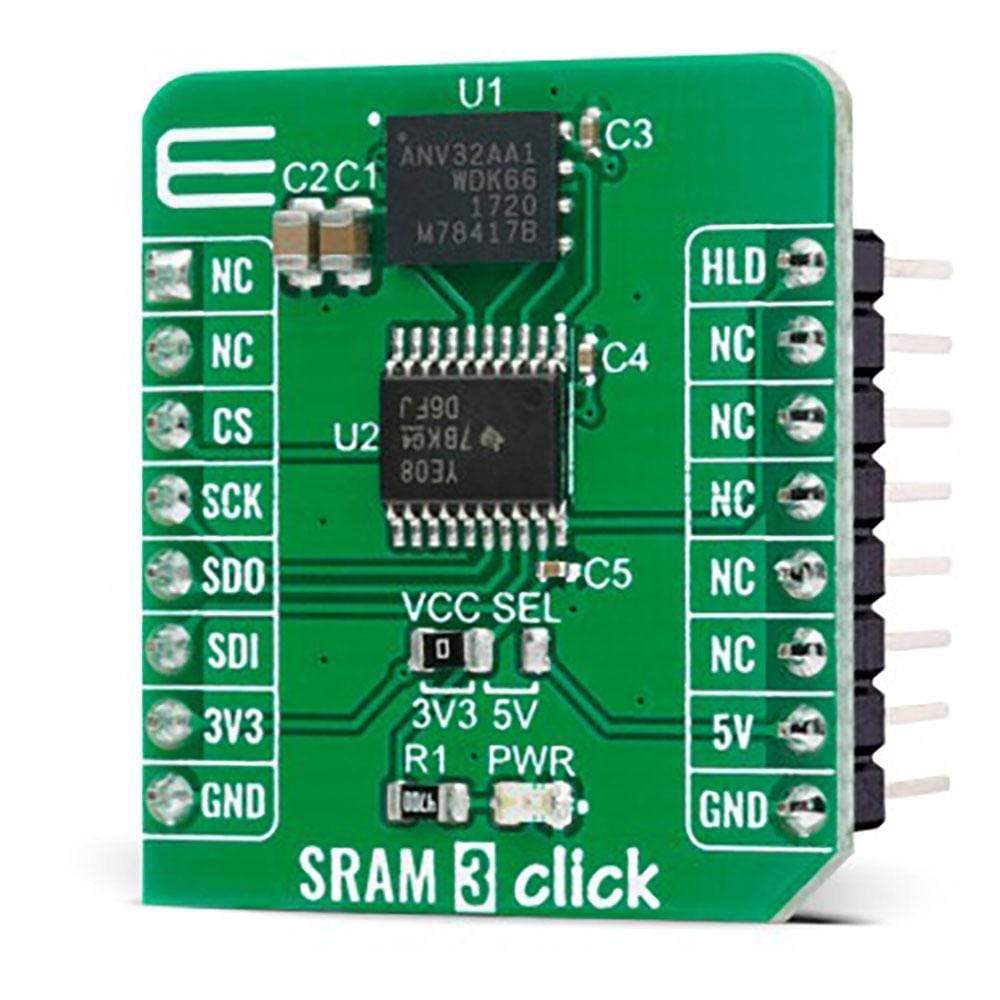
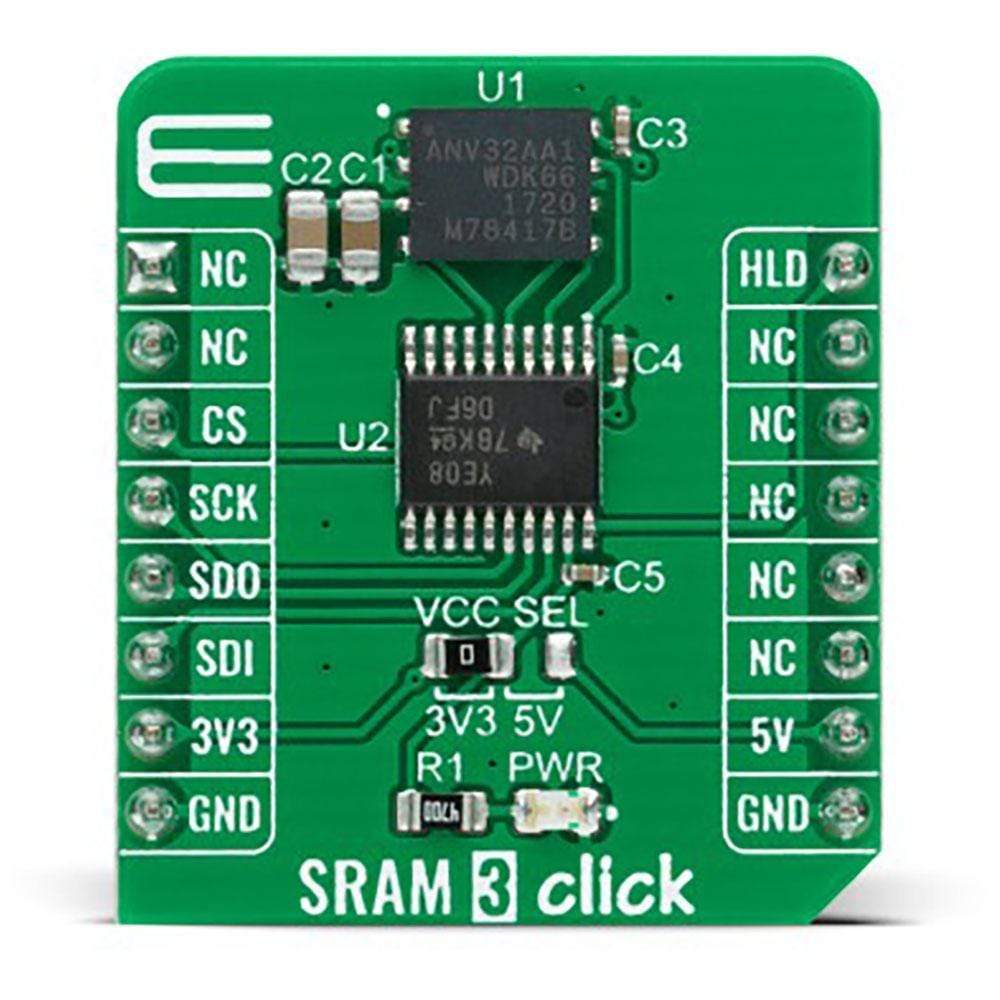
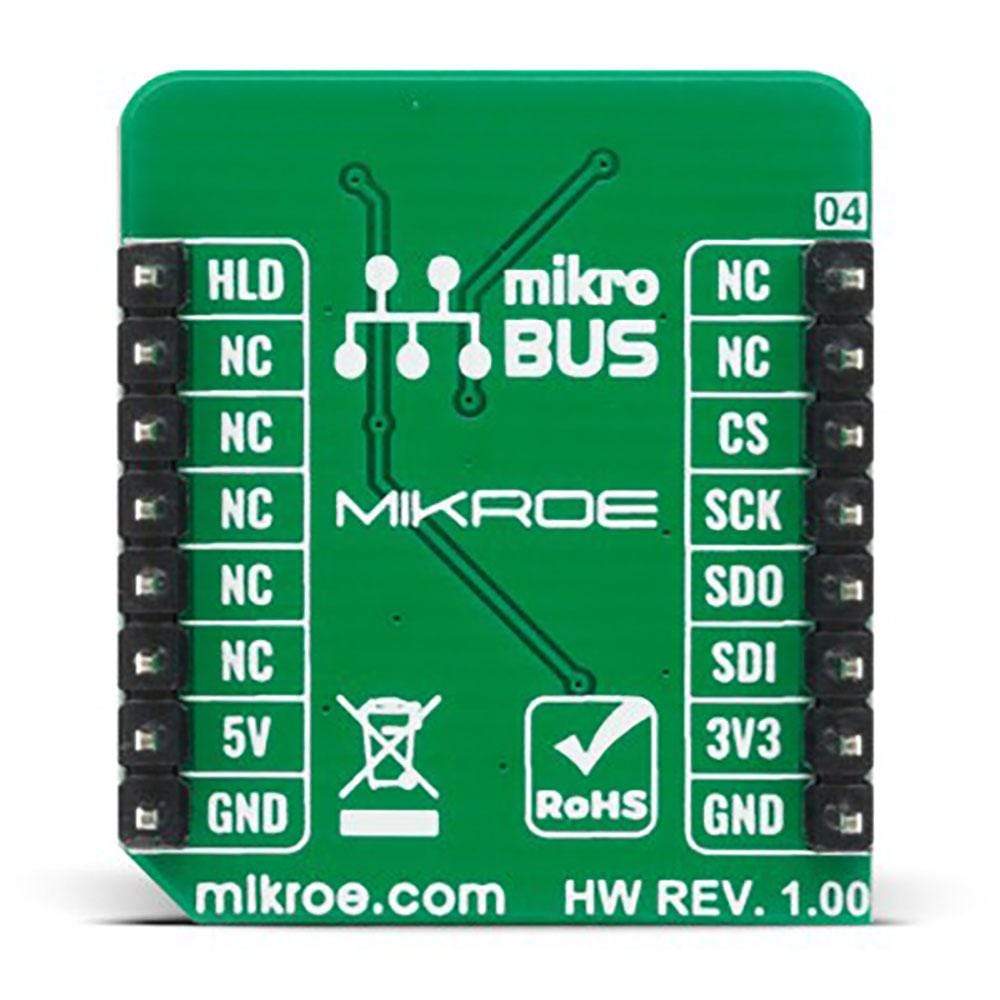
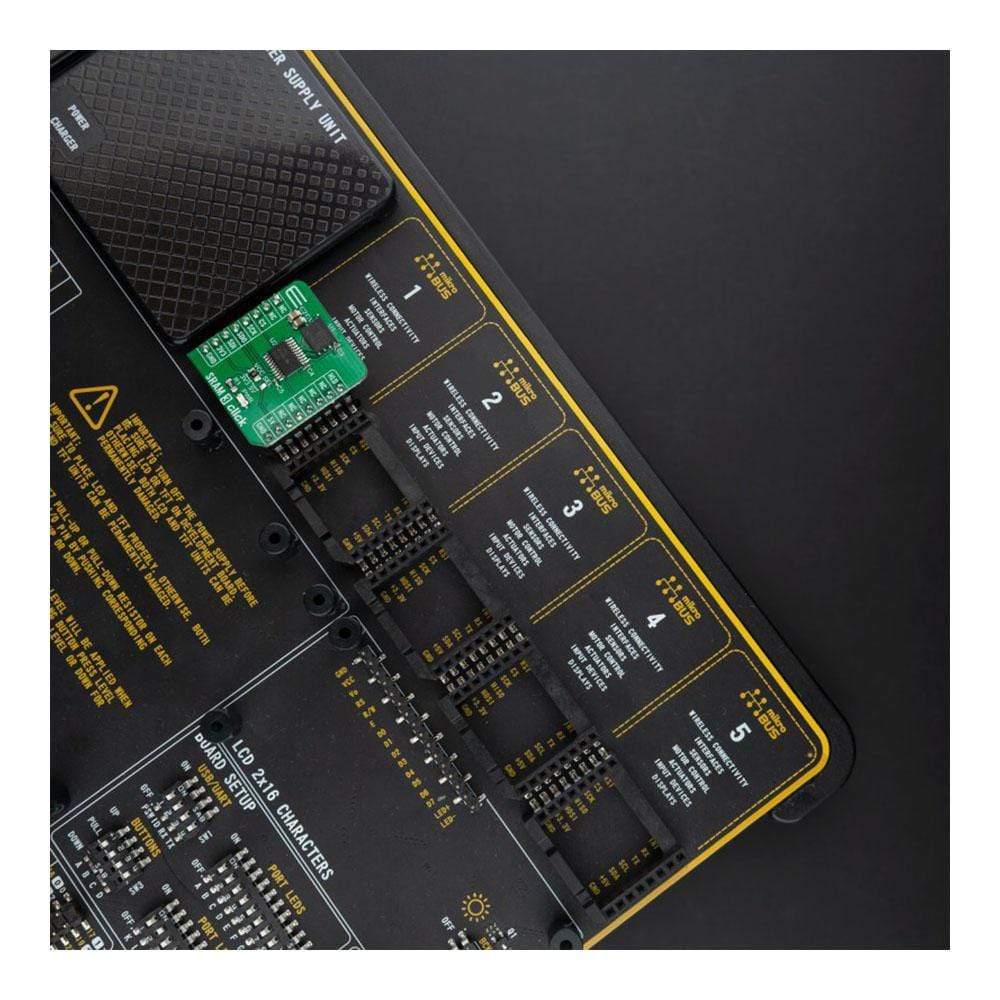
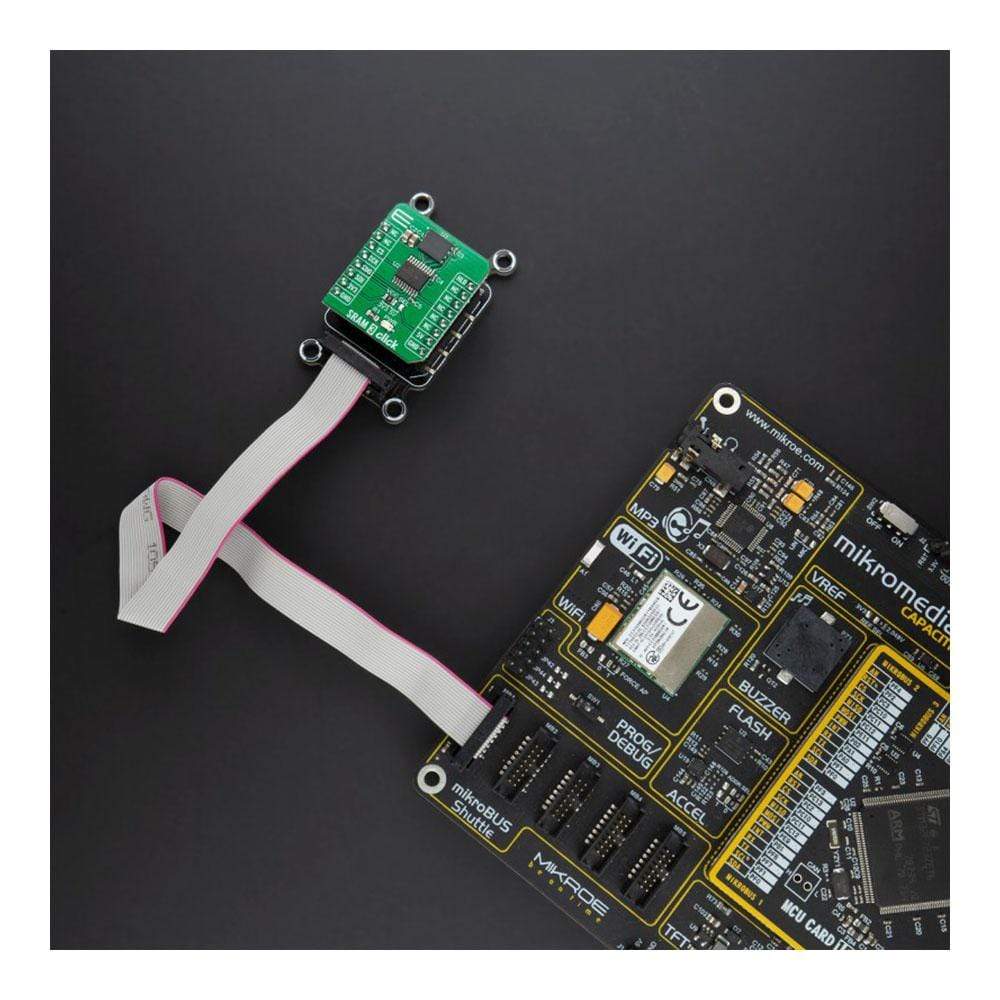
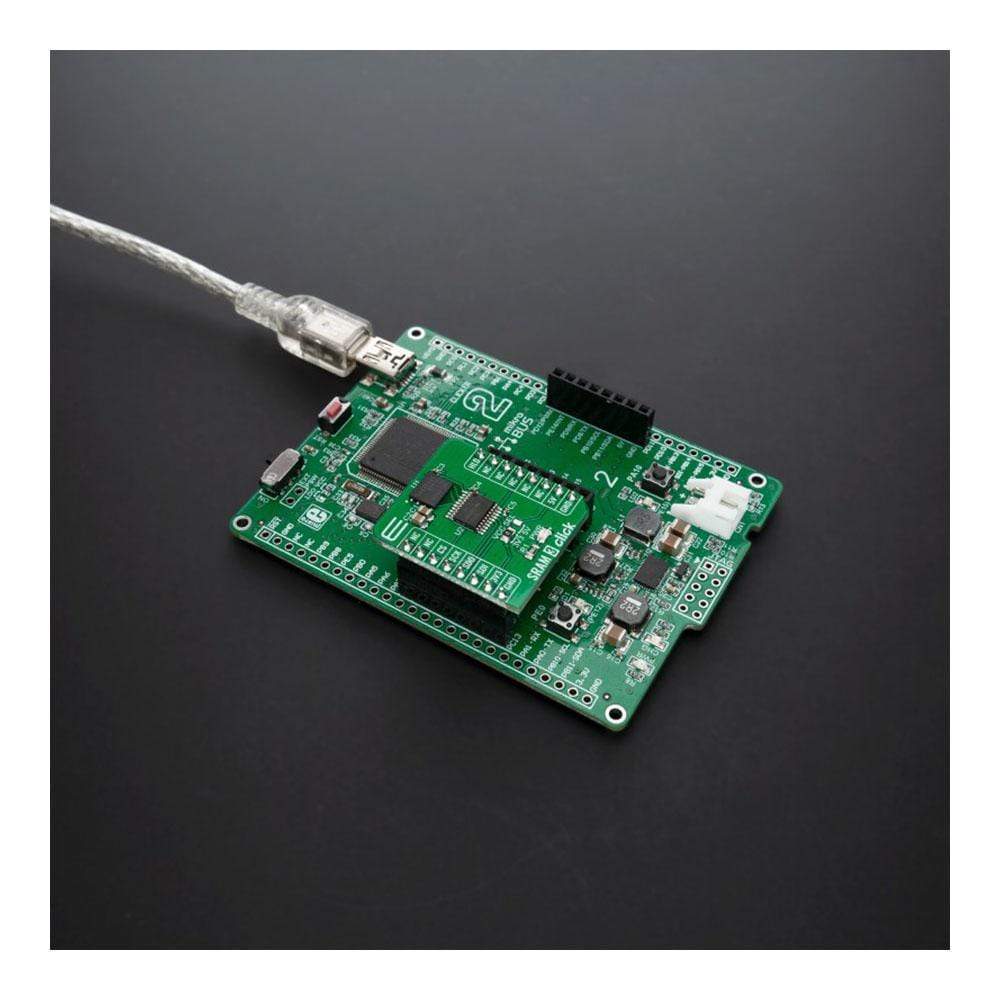
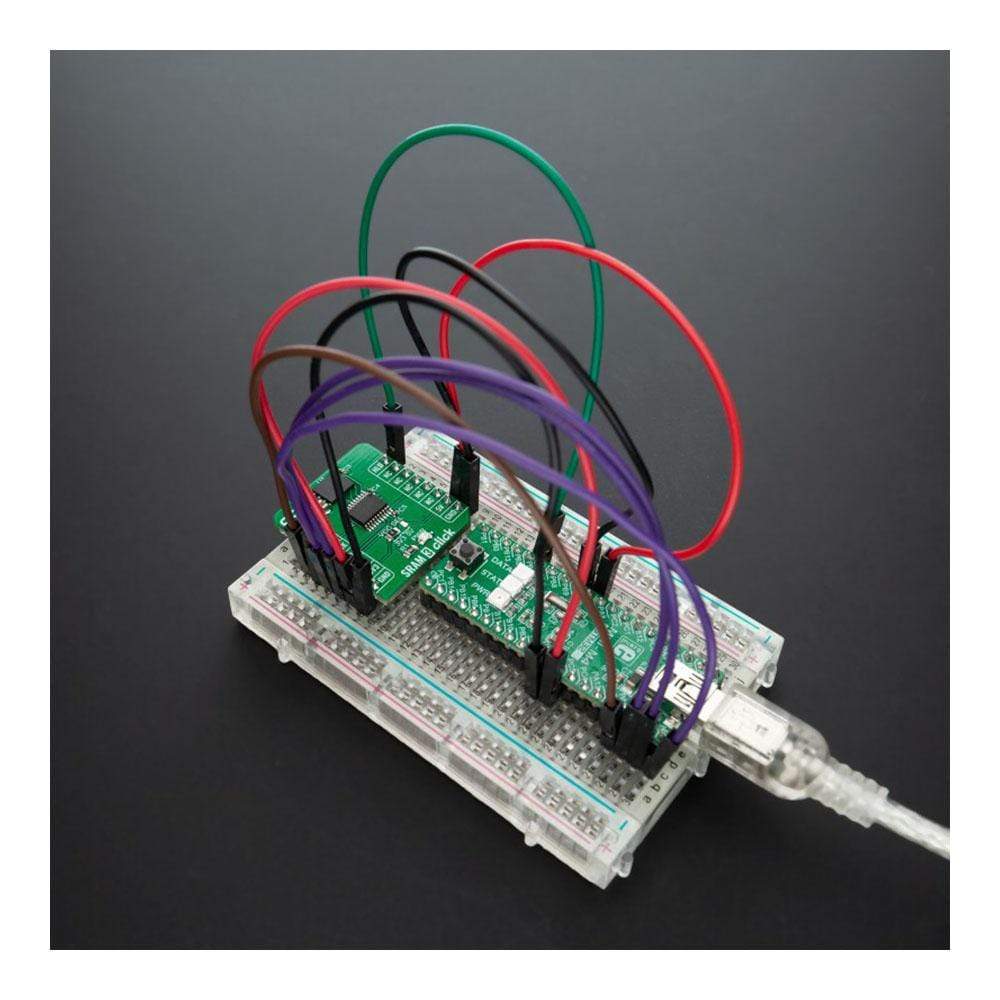
Overview
The SRAM 3 Click Board™ is a 1 Mb Serial Random Access Memory add-on board with the non-volatile SONOS storage element included with each memory cell, organized as 128k words of 8 bits each. This board features the ANV32AA1WDK66 an SRAM memory from Anvo-System Dresden. The device is accessed by a high-speed SPI-compatible bus. The serial SRAM provides fast access & cycle times, ease of use and unlimited read & write endurance of a standard SRAM. With dedicated safety features like supporting high data accuracy and all other features makes SRAM 3 Click excellent choice to store drive profiles, configurations and similar data, which are typically stored in a FLASH.
The SRAM 3 Click Board™ is supported by a mikroSDK compliant library, which includes functions that simplify software development. This Click Board™ comes as a fully tested product, ready to be used on a system equipped with the mikroBUS™ socket.
Downloads
Das SRAM 3 Click Board™ ist eine 1 MB große serielle Zusatzkarte für Direktzugriffsspeicher mit dem nichtflüchtigen SONOS-Speicherelement, das in jeder Speicherzelle enthalten ist und als 128.000 Wörter mit jeweils 8 Bit organisiert ist. Diese Karte enthält den ANV32AA1WDK66, einen SRAM-Speicher von Anvo-System Dresden. Der Zugriff auf das Gerät erfolgt über einen SPI-kompatiblen Hochgeschwindigkeitsbus. Der serielle SRAM bietet schnelle Zugriffs- und Zykluszeiten, Benutzerfreundlichkeit und unbegrenzte Lese- und Schreibdauer eines Standard-SRAM. Mit dedizierten Sicherheitsfunktionen wie der Unterstützung hoher Datengenauigkeit und allen anderen Funktionen ist SRAM 3 Click die ausgezeichnete Wahl zum Speichern von Laufwerksprofilen, Konfigurationen und ähnlichen Daten, die normalerweise in einem FLASH gespeichert sind.
Das SRAM 3 Click Board™ wird von einer mikroSDK-kompatiblen Bibliothek unterstützt, die Funktionen enthält, die die Softwareentwicklung vereinfachen. Dieses Click Board™ wird als vollständig getestetes Produkt geliefert und ist bereit für den Einsatz auf einem System, das mit der mikroBUS™-Buchse ausgestattet ist.
| General Information | |
|---|---|
Part Number (SKU) |
MIKROE-4293
|
Manufacturer |
|
| Physical and Mechanical | |
Weight |
0.017 kg
|
| Other | |
Country of Origin |
|
HS Code Customs Tariff code
|
|
EAN |
8606027380709
|
Warranty |
|
Frequently Asked Questions
Have a Question?
Be the first to ask a question about this.







